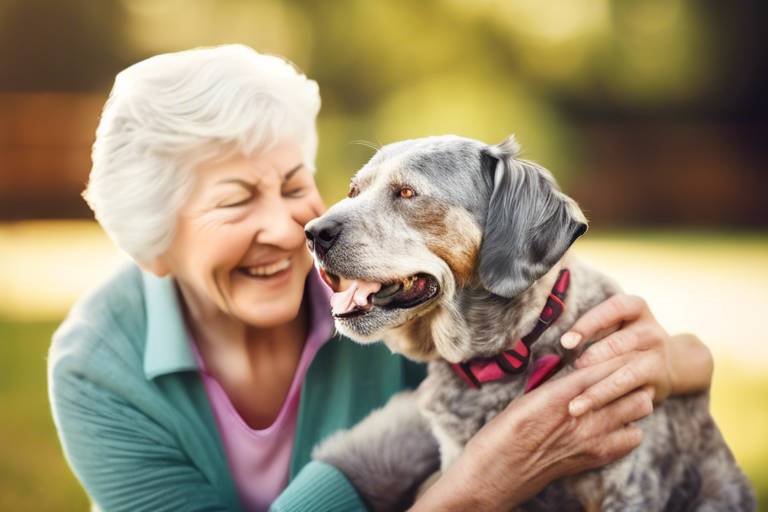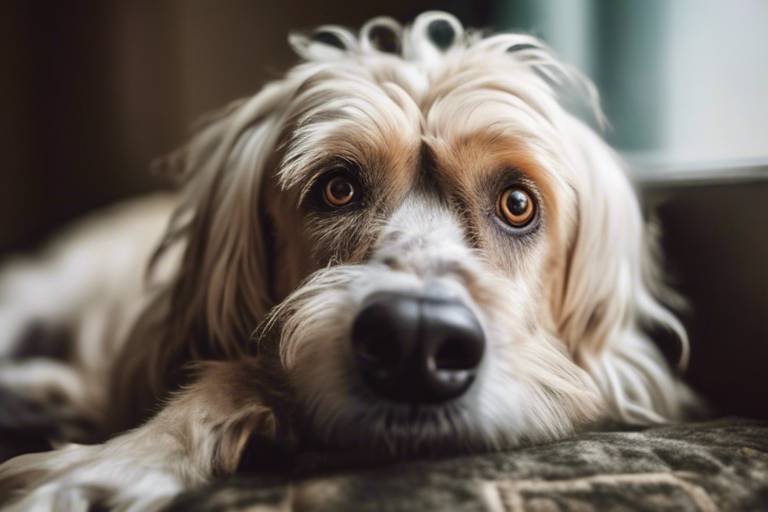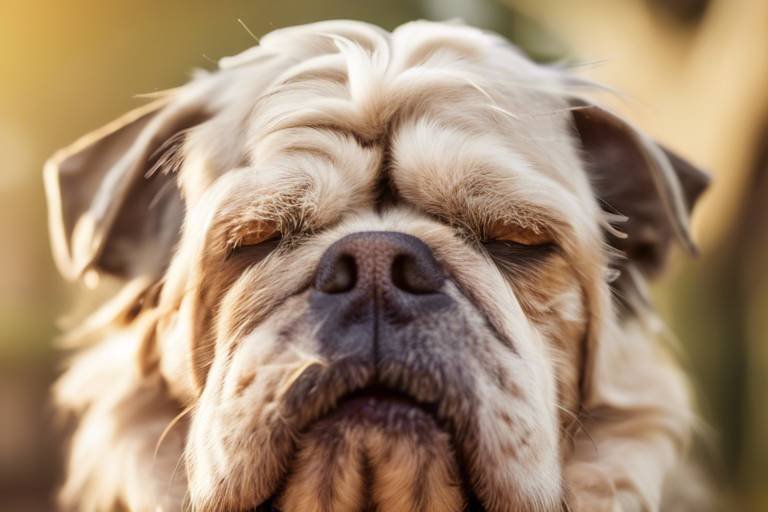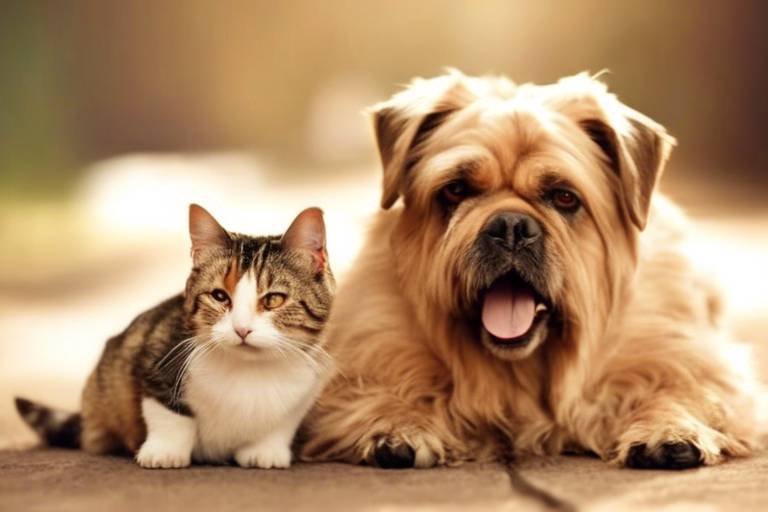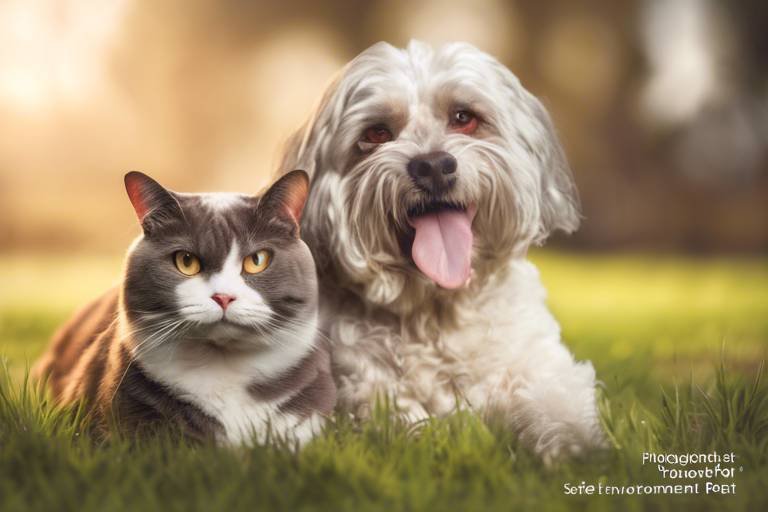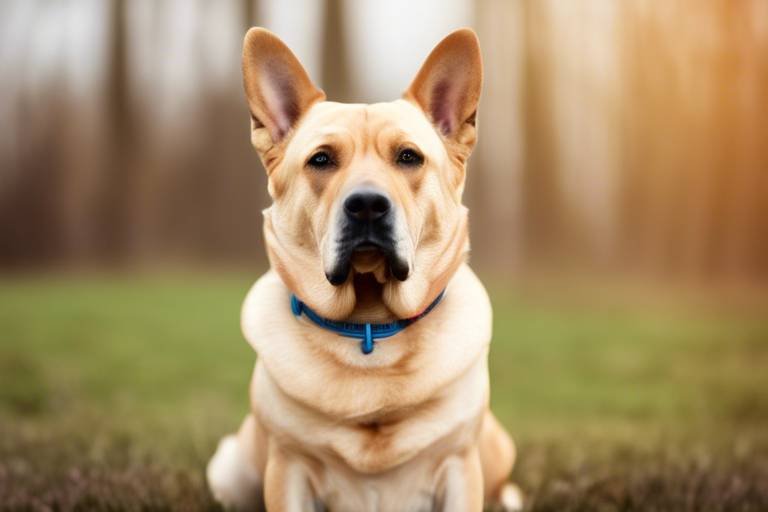Tips for Reducing Stress During Grooming Sessions
Grooming your furry friend can sometimes feel like a scene from a horror movie, right? You know the drill: the clippers buzz, the brushes tangle, and your pet looks like they just saw a ghost. But it doesn’t have to be this way! This article provides practical strategies to help pet owners minimize stress for their furry friends during grooming sessions, ensuring a more pleasant experience for both pets and their caregivers. By understanding your pet's needs and making a few adjustments, you can transform grooming from a dreaded chore into a bonding experience.
Before we dive into the tips, let’s take a moment to understand what’s happening in your pet’s mind. Just like humans, pets can experience anxiety, and recognizing the signs is crucial for effective grooming. Common behaviors such as hiding, excessive barking, or even trying to escape can indicate that your pet is feeling stressed. Certain triggers, like loud noises or unfamiliar tools, can heighten their anxiety levels. So, what can you do about it? Well, first, pay attention to your pet's body language. Are their ears back? Is their tail tucked? These are all signs that your furry friend might be feeling a bit on edge.
Now that we know what to look for, let’s talk about how to create a serene grooming space. A quiet, comforting area can significantly reduce stress for your pet. Choose a location that is away from distractions, like other pets or loud household noises. You might want to play some soft music or use a white noise machine to drown out any sudden sounds that could startle your pet. Additionally, consider the temperature of the room. A cool, well-ventilated area will help keep your pet comfortable during the grooming session.
Using appropriate grooming tools can make a world of difference in your pet's comfort. Selecting the right brushes, clippers, and other equipment is essential to ease the grooming process. For instance, using a soft brush can prevent discomfort for pets with sensitive skin. On the other hand, loud clippers can frighten pets, so opting for noise-reducing clippers can help alleviate fear and anxiety. The right tools not only make grooming easier but also create a more positive experience for your furry friend.
For pets with sensitive skin, using soft brushes can prevent discomfort. Gentle grooming tools, such as rubber brushes or those with rounded tips, can provide a soothing experience. These brushes not only detangle fur but also stimulate the skin without causing irritation. The benefits of gentle grooming tools are immense, as they promote a positive experience for anxious pets, making them more likely to enjoy grooming sessions in the future.
Loud clippers can be a source of fear for many pets during grooming. Choosing quieter grooming tools is essential to help alleviate fear and anxiety. Look for clippers that are specifically designed to operate quietly, as this can make a significant difference in your pet's comfort level. Remember, a calm pet is a happy pet!
Consistency is key in reducing stress. Establishing a regular grooming schedule helps pets acclimate to the process over time. Just like humans thrive on routine, pets benefit from knowing what to expect. Start with short grooming sessions and gradually increase the duration as your pet becomes more comfortable. This way, they’ll learn that grooming is just another part of their day, not something to fear.
Utilizing rewards can transform grooming into a positive experience. By encouraging good behavior during grooming sessions through treats and praise, you can create a more enjoyable environment for your pet. When your furry friend remains calm or allows you to brush them, shower them with affection and a tasty treat. This positive reinforcement helps them associate grooming with good things, making future sessions much easier.
Strategically offering treats can help distract and soothe your pet during grooming. Timing is everything! Try giving your pet a treat right before starting to groom or during breaks. This not only distracts them from the grooming process but also rewards them for their good behavior. Just remember to keep the treats small to avoid overfeeding.
Integrating play into grooming can create a more enjoyable experience. Balancing grooming tasks with fun activities keeps your pet engaged and relaxed. For example, you can groom your pet for a few minutes and then take a break to play their favorite game. This not only breaks up the monotony of grooming but also reinforces the idea that grooming can be fun!
Sometimes, professional assistance is necessary. If you notice persistent signs of anxiety or if your pet becomes aggressive during grooming, it might be time to consult a professional groomer or veterinarian. They can provide guidance and support tailored to your pet's specific needs. Remember, it’s always better to seek help than to risk stressing your pet further.
- How often should I groom my pet? Grooming frequency depends on your pet's breed and coat type. Long-haired breeds may require weekly grooming, while short-haired pets may need it less often.
- What should I do if my pet is afraid of grooming? Start slowly, use positive reinforcement, and consider consulting a professional groomer for help.
- Are there grooming tools specifically for anxious pets? Yes, look for soft brushes and noise-reducing clippers designed to minimize discomfort.
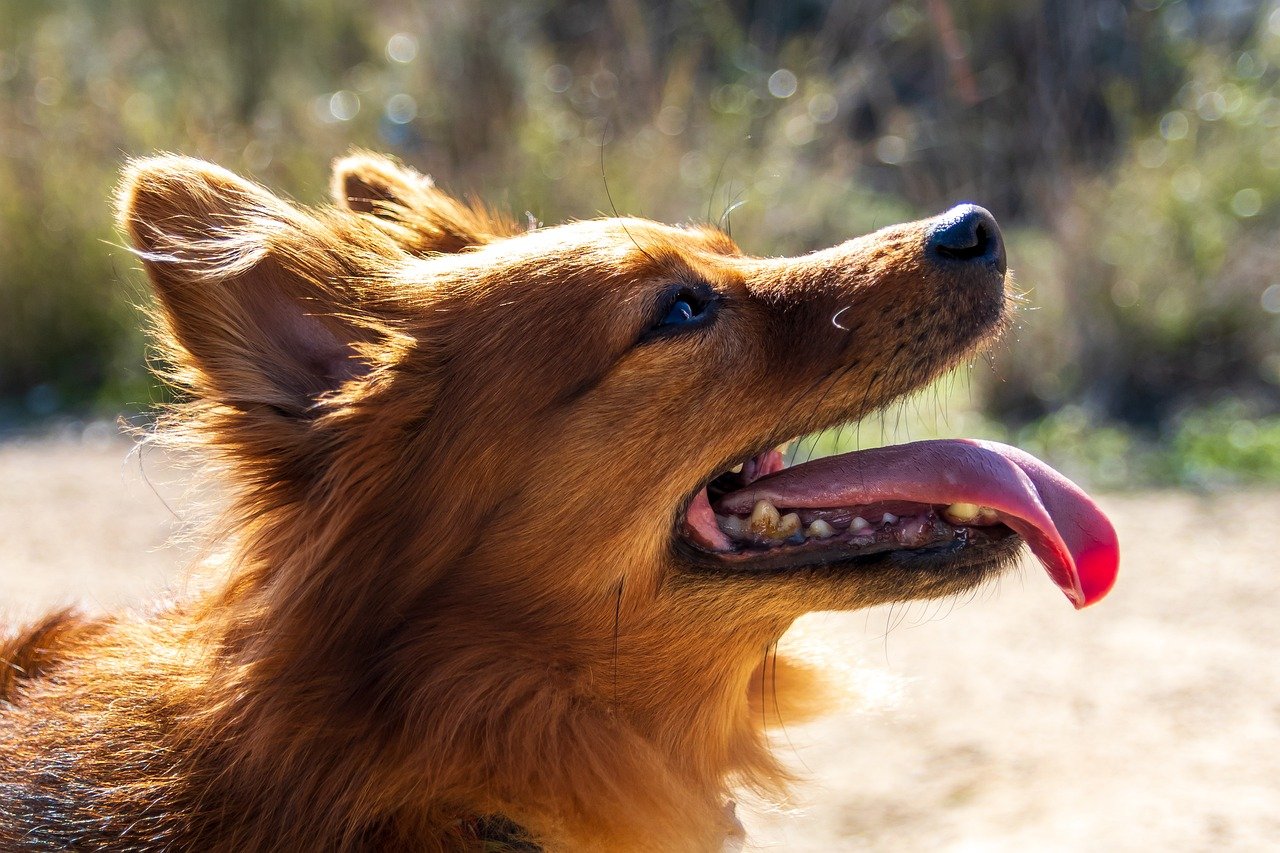
Understanding Pet Anxiety
Recognizing pet anxiety is essential for ensuring a smooth grooming experience. Just like humans, pets can experience anxiety, and it often manifests in various ways. For instance, have you ever noticed your furry friend trembling, hiding, or even growling when it's time for grooming? These behaviors are not just quirks; they are clear signs that your pet is feeling stressed or anxious. Understanding these signals can help you take the necessary steps to create a more comfortable environment for your pet.
Some common signs of anxiety in pets include:
- Excessive barking or whining: This can indicate distress or discomfort.
- Hiding or cowering: If your pet retreats to a corner or under furniture, it's a clear sign they're feeling overwhelmed.
- Destructive behavior: Chewing furniture or scratching doors can be a way for anxious pets to cope with stress.
- Increased aggression: Sometimes, fear can lead pets to act defensively, which can be dangerous during grooming.
Additionally, certain triggers can exacerbate your pet's anxiety during grooming sessions. These triggers might include:
- New environments: A sudden change in location can unsettle your pet.
- Strange sounds: Loud noises from clippers or other grooming tools can startle them.
- Unfamiliar people: If you’re using a new groomer or inviting someone into your home, your pet may feel uneasy.
Understanding these signs and triggers is the first step in minimizing stress during grooming. By observing your pet's behavior closely, you can tailor your approach to suit their needs. For example, if you notice your pet becomes anxious at the sound of clippers, consider investing in noise-reducing clippers or introducing the clippers gradually during playtime. The goal is to create a safe space where your pet feels relaxed and secure. Remember, patience is key. Just like humans, pets need time to adjust to new experiences, especially ones that involve grooming.
Ultimately, the better you understand your pet's anxiety, the more effectively you can address it. This understanding not only improves the grooming experience but also strengthens the bond between you and your furry friend. So, the next time you prepare for a grooming session, take a moment to assess your pet's emotional state and adjust your approach accordingly.
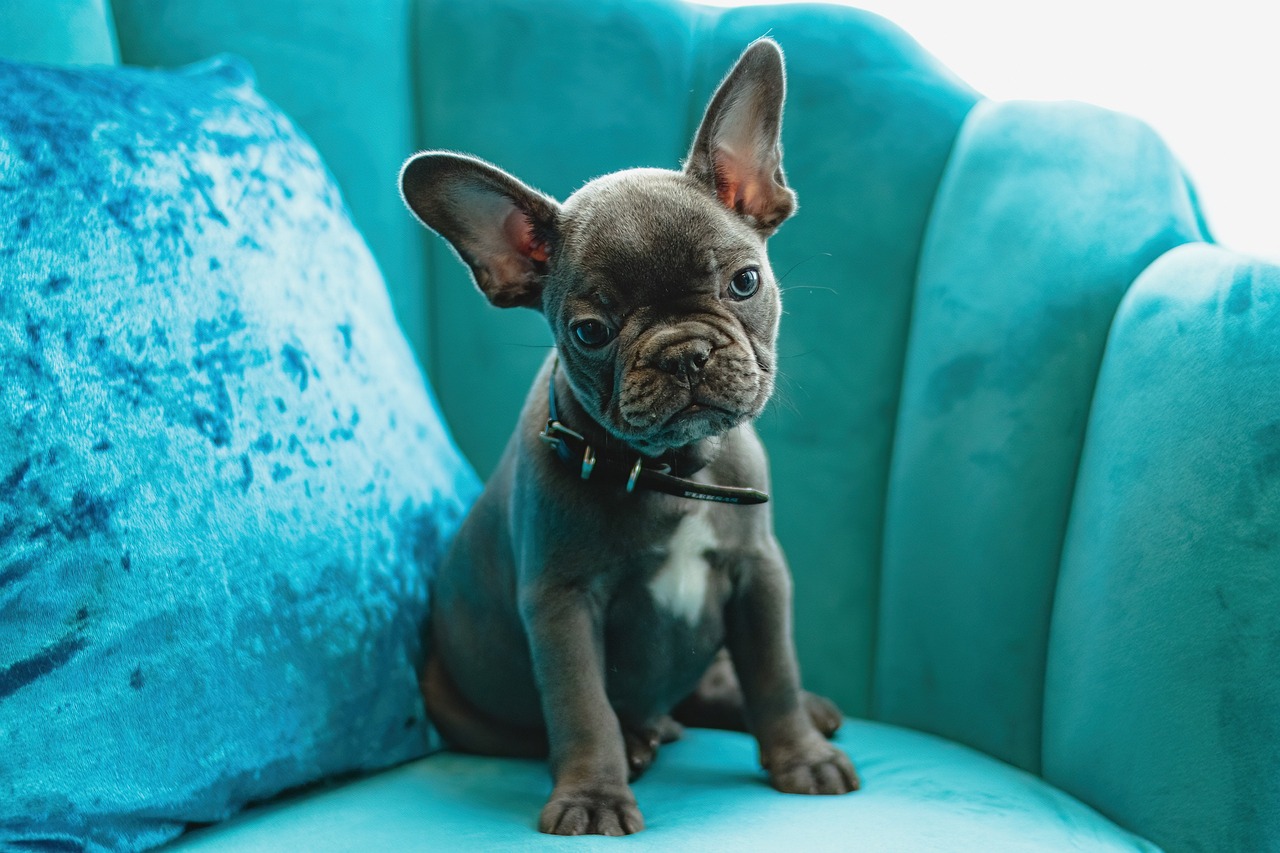
Creating a Calm Environment
Creating a calm environment for your pet during grooming sessions is not just a luxury; it's a necessity. Imagine stepping into a chaotic room filled with loud noises and unfamiliar smells. Now, think about how your furry friend feels in a similar situation. Pets, just like humans, can experience anxiety, and a serene grooming space can significantly help in alleviating that stress. Start by choosing a quiet area in your home, away from distractions such as other pets, loud appliances, or bustling family members. This dedicated space will become a safe haven for your pet, where they can feel secure and relaxed.
Lighting plays a crucial role in establishing a calming atmosphere. Soft, natural light can create a more inviting space compared to harsh fluorescent bulbs. If possible, try to groom your pet in a well-lit area that receives plenty of sunlight. If natural light isn't an option, consider using warm white bulbs that mimic the sun's glow. Additionally, the temperature of the room should be comfortable. Too hot or too cold can make your pet uneasy, so aim for a temperature that is pleasant for both you and your furry friend.
Another essential aspect is the use of familiar scents. Pets are highly sensitive to their environment, and incorporating scents they recognize can enhance their feeling of safety. Consider using a favorite blanket or toy that carries their scent. You might also try using calming sprays or diffusers with pheromones designed specifically for pets. These products can help soothe anxious animals and make the grooming process much smoother.
Sound can also impact your pet's comfort level. Loud noises can startle them, so it’s beneficial to groom in a quiet space. If your pet is particularly sensitive to sound, consider playing soft music or white noise to drown out any unexpected disturbances. This can create a more relaxed atmosphere and help your pet associate grooming with positive experiences.
Lastly, patience is key. Allow your pet to explore the grooming area at their own pace. You can even spend some time sitting with them in the space before starting the grooming session. This will help them feel more at ease and establish a bond of trust between you and your pet. Remember, the goal is to create a calming environment that promotes a positive grooming experience, making it something both you and your pet can look forward to.
- How can I tell if my pet is anxious during grooming?
Watch for signs such as trembling, hiding, excessive panting, or attempts to escape. If your pet shows these behaviors, take a break and try to soothe them.
- What are some calming products for pets?
Look for calming sprays, pheromone diffusers, or herbal supplements designed to reduce anxiety in pets.
- How often should I groom my pet?
The frequency of grooming depends on your pet's breed and coat type. Generally, regular grooming every few weeks is beneficial.
Choosing the Right Tools
When it comes to grooming your furry friend, the tools you choose can make all the difference. Just like a chef needs the right knives to create a culinary masterpiece, pet owners need the right grooming tools to ensure a smooth and stress-free experience for their pets. Selecting the appropriate brushes, clippers, and other grooming equipment is essential in minimizing discomfort and anxiety during grooming sessions. So, let’s dive into what makes a grooming tool the right fit for your pet!
First off, consider the type of coat your pet has. Different breeds come with varying coat types, and using the wrong tool can lead to tangles, pulling, and even skin irritation. For instance, if your pet has a long, flowing coat, a slicker brush can be your best friend. It effectively removes knots and tangles while being gentle on their skin. On the other hand, short-haired breeds might benefit from a rubber grooming mitt, which not only helps to remove loose hair but also provides a soothing massage that your pet will love.
Another crucial factor is the noise level of the tools you choose. Pets, especially those that are anxious, can be sensitive to loud sounds. Noise-reducing clippers are a fantastic option for those jittery pups who might get scared at the sound of traditional clippers. These quieter tools can help create a more relaxed atmosphere during grooming sessions. Imagine how much easier it would be if your pet didn’t jump at every snip and buzz! Instead, they could focus on the pampering they are receiving.
Moreover, don't underestimate the power of ergonomics in grooming tools. Just like you wouldn't want to use a heavy, uncomfortable brush for hours, your pet deserves tools that are easy on them too. Look for brushes and clippers that are lightweight and easy to maneuver. This not only makes the grooming process more enjoyable for you but also ensures that you can reach those tricky spots without causing any distress to your pet.
To help you make informed decisions, here’s a quick comparison table of grooming tools:
| Tool Type | Best For | Noise Level | Comfort Level |
|---|---|---|---|
| Slicker Brush | Long-haired breeds | Low | High |
| Rubber Grooming Mitt | Short-haired breeds | Very Low | Very High |
| Noise-reducing Clippers | All breeds, especially anxious pets | Very Low | High |
| Ergonomic Brush | All breeds | Low | Very High |
In conclusion, choosing the right grooming tools is a vital step in ensuring that your pet feels comfortable and secure during grooming sessions. By considering their coat type, the noise level of the tools, and the overall ergonomics, you can create a more pleasant experience for your furry friend. Remember, a happy pet makes for a happy owner!
Soft Brushes for Sensitive Skin
When it comes to grooming our furry companions, comfort should always be a top priority, especially for pets with sensitive skin. Using the right grooming tools can make all the difference in ensuring a positive experience for both you and your pet. Soft brushes are specifically designed to be gentle on delicate skin, minimizing discomfort and reducing anxiety during grooming sessions.
Imagine trying to brush your hair with a harsh bristle brush; it would be uncomfortable, right? Now, think about how your pet feels when you use a tool that irritates their skin. Soft brushes, often made from materials like silicone or soft nylon, are crafted to glide smoothly over your pet's coat, providing a soothing sensation rather than a painful tug. This gentle approach not only helps to remove loose hair and debris but also promotes a sense of calm, making grooming a more enjoyable experience.
Here are some benefits of using soft brushes for pets with sensitive skin:
- Reduces Skin Irritation: Soft brushes minimize the risk of scratches and irritation, which is especially important for pets with existing skin conditions.
- Encourages Bonding: The gentle strokes of a soft brush can create a bonding experience between you and your pet, reinforcing trust and comfort.
- Promotes Relaxation: The soothing sensation of a soft brush can help relax anxious pets, making them more receptive to grooming.
When selecting a soft brush, consider the specific needs of your pet. For example, long-haired breeds may benefit from a soft slicker brush that can gently detangle their fur without pulling, while short-haired breeds might do well with a soft bristle brush that effectively removes loose hair without causing discomfort. Always pay attention to how your pet reacts during grooming; if they seem uncomfortable, it might be time to switch to a softer tool.
In summary, investing in a high-quality soft brush is a small change that can lead to significant improvements in your pet's grooming experience. By prioritizing their comfort, you not only make grooming more pleasant but also strengthen the bond you share with your furry friend.
Q: How do I know if my pet has sensitive skin?
A: Signs of sensitive skin in pets include redness, itching, excessive scratching, or flinching during grooming. If you notice these behaviors, it might be time to switch to softer grooming tools.
Q: Can I use human brushes on my pet?
A: It's best to use brushes specifically designed for pets. Human brushes may not be suitable for your pet's coat type and could cause discomfort.
Q: How often should I groom my pet with sensitive skin?
A: The frequency of grooming depends on your pet's coat type. Generally, regular grooming every few weeks is recommended, but consult your veterinarian or a professional groomer for specific advice.
Noise-Reducing Clippers
When it comes to grooming your furry friend, one of the most significant stressors can be the noise produced by grooming tools, particularly clippers. Many pets are naturally sensitive to loud sounds, which can lead to panic and anxiety during grooming sessions. This is where come into play. These specially designed tools operate at a lower decibel level, making them much less intimidating for your pet. Imagine how you feel when you hear a loud vacuum cleaner or a thunderstorm; now, think about how your pet feels when faced with the same kind of noise during grooming!
Investing in noise-reducing clippers can truly transform the grooming experience. They often feature advanced technology that dampens sound without compromising performance. This means you can achieve that perfect trim while keeping your pet calm and comfortable. Additionally, many of these clippers are designed with vibration-reducing features, which further minimizes the sensory overload that can occur during grooming. Just like you might prefer a quiet, cozy café over a bustling, noisy restaurant, your pet will appreciate a calmer grooming environment.
When selecting noise-reducing clippers, consider the following factors to ensure you choose the right one:
- Decibel Level: Look for clippers that specify their sound level. Aim for those that operate below 60 decibels.
- Blade Quality: High-quality blades not only cut efficiently but also tend to produce less noise.
- Weight and Ergonomics: Lighter clippers can be easier to handle, which may help you groom your pet more quickly and with less fuss.
Incorporating noise-reducing clippers into your grooming routine can lead to a more enjoyable experience for both you and your pet. It’s all about creating a calm atmosphere where your furry friend feels safe and secure. Remember, a happy pet makes for a happy groomer! So, next time you prepare for a grooming session, consider how the sound of your tools can impact your pet’s comfort, and make the switch to noise-reducing clippers.
Establishing a Routine
Establishing a consistent grooming routine is one of the most effective ways to reduce your pet's stress during grooming sessions. Just like humans, pets thrive on familiarity and predictability. Imagine how you feel when you know exactly what to expect in your day; it brings a sense of calm, right? The same goes for our furry friends. By creating a regular schedule for grooming, you help your pet acclimate to the process, making it less intimidating over time.
Start by determining a grooming frequency that suits your pet's breed, coat type, and individual needs. For instance, long-haired breeds may require weekly grooming, while short-haired pets might only need a monthly touch-up. Whatever the case, consistency is key! You can use a calendar or an app to remind you when it's time for grooming. This way, both you and your pet will know when to prepare for the next session.
During grooming sessions, try to follow a familiar sequence of activities. For example, you might start with brushing, then move on to bathing, followed by nail clipping, and finally, a little playtime as a reward. This predictable order can help your pet feel more at ease, as they will start associating each step with the previous one, leading to a more relaxed experience overall.
In addition to the grooming itself, consider incorporating calming activities into your routine. For example, you might play soft music or use pheromone sprays designed to soothe pets before starting the grooming process. This can create a more inviting atmosphere, making your pet feel safe and secure. Remember, the goal is to transform grooming from a dreaded chore into a bonding experience that both you and your pet can look forward to.
Lastly, always be patient and attentive to your pet's reactions. If they seem uncomfortable or anxious, it might be a sign to adjust your approach or take a break. After all, the ultimate aim is to make grooming a stress-free experience that strengthens your bond with your furry companion.
- How often should I groom my pet? The frequency depends on your pet's breed and coat type. Long-haired pets typically need more frequent grooming compared to short-haired ones.
- What should I do if my pet is scared of grooming? Establishing a routine, using calming tools, and incorporating treats can help ease their fear over time.
- Can I groom my pet at home? Yes, many pet owners successfully groom their pets at home. However, if you're unsure, consider consulting a professional groomer for advice.
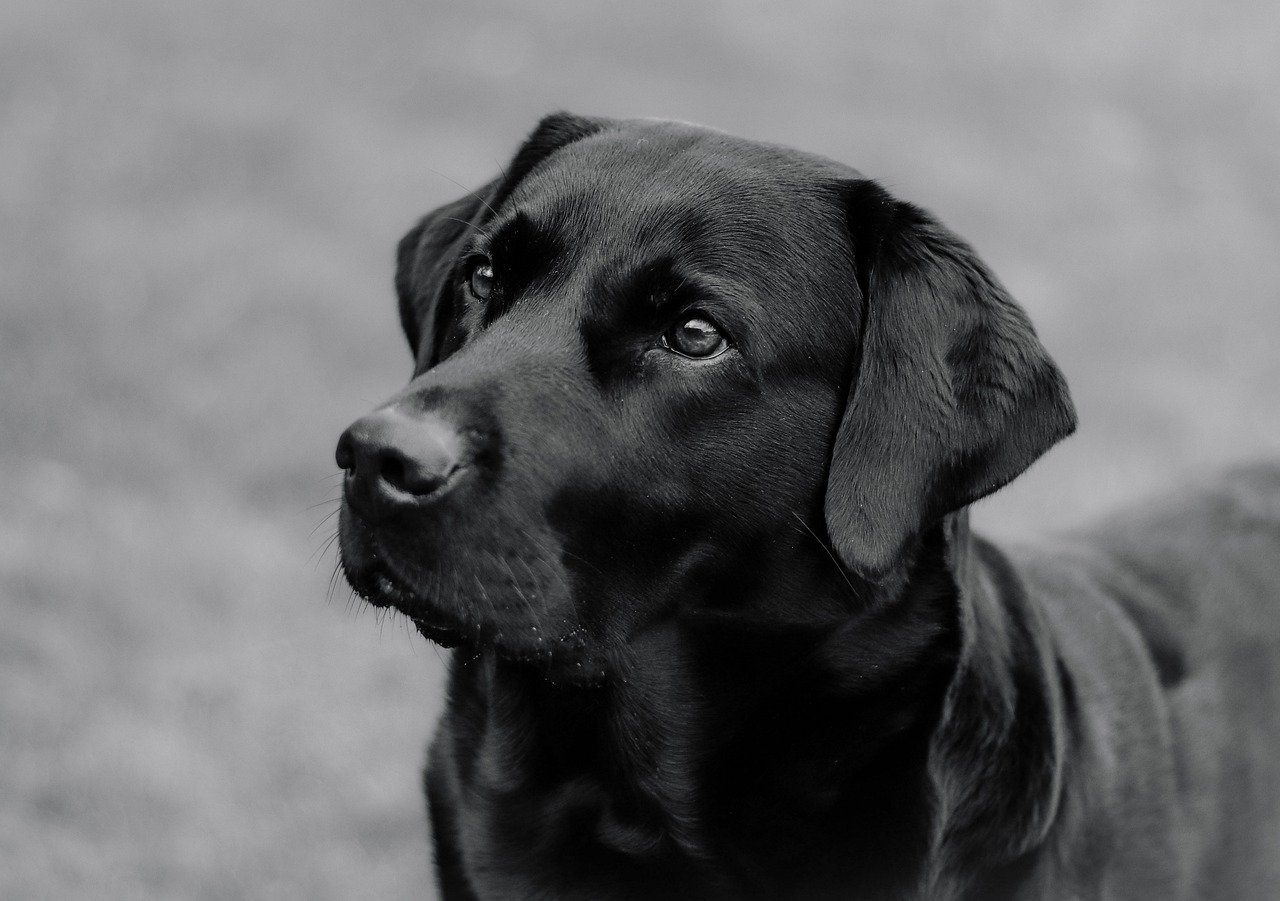
Positive Reinforcement Techniques
Transforming your pet's grooming experience from a dreaded task into a delightful bonding moment is entirely possible through the use of . Imagine this: instead of your furry friend trembling at the sight of the grooming tools, they eagerly waddle over, tail wagging, excited for what’s to come. This shift in behavior can be achieved by rewarding your pet for calm and cooperative actions during grooming sessions.
One effective method is to use treats strategically. Timing is everything! When your pet remains calm as you brush their fur or trim their nails, that’s the perfect moment to offer a treat. This not only distracts them but also creates a positive association with the grooming process. However, it’s essential to choose the right moments to reward them. For instance, you might want to give a treat:
- Before starting the grooming session to create anticipation.
- During the process when they stay calm or allow you to groom a difficult area.
- After the session as a reward for their good behavior.
Incorporating playtime into grooming can also work wonders. Think of it as mixing business with pleasure! After completing a challenging grooming task, take a break to engage in a quick game of fetch or tug-of-war. This not only helps your pet associate grooming with fun but also reinforces that their cooperation leads to enjoyable activities. It’s like a little reward system that they can understand!
Moreover, be sure to use a calm and soothing voice throughout the grooming process. Your tone can significantly influence your pet's comfort level. When you speak gently, it helps to reassure them that everything is okay, creating a calming atmosphere. Imagine how much more comfortable you would feel if someone you trusted was encouraging you during a task you found stressful!
To help you visualize the impact of positive reinforcement, consider the following table that outlines the benefits of various techniques:
| Technique | Benefits |
|---|---|
| Treats | Encourages calm behavior, creates positive associations |
| Playtime | Enhances bonding, makes grooming enjoyable |
| Calm Voice | Reassures pets, reduces anxiety |
By implementing these positive reinforcement techniques, you can not only ease your pet’s anxiety but also strengthen your bond. Remember, patience is key! Each pet is unique, and what works for one may not work for another. However, with time and consistency, you’ll likely find that your pet begins to look forward to grooming sessions rather than dread them.
Q: How long should I groom my pet each session?
A: Start with short sessions of about 5-10 minutes, gradually increasing the time as your pet becomes more comfortable.
Q: What if my pet continues to show signs of anxiety during grooming?
A: If your pet remains fearful, consider consulting a professional groomer or veterinarian for additional strategies tailored to your pet's needs.
Q: Can I use my pet's favorite toy as a reward?
A: Absolutely! Incorporating their favorite toy can be just as effective as treats in creating a positive grooming experience.
Using Treats Wisely
When it comes to grooming your pet, can be a game changer. Imagine this: you're trying to brush your dog's fur, but they keep squirming and whining. Frustrating, right? Well, by incorporating treats into the grooming process, you can transform that anxiety into excitement. The key is to use treats as a positive reinforcement tool. This means rewarding your pet for calm behavior during grooming sessions, which encourages them to associate grooming with something enjoyable.
Timing is everything! You don't want to just toss a treat at your pet randomly. Instead, consider the following strategies:
- Before Grooming: Give your pet a treat to create a positive association with the grooming area. This could be a special treat they only get during grooming sessions.
- During Grooming: If your pet is sitting still and behaving well, reward them with a treat. This reinforces their good behavior and encourages them to remain calm.
- After Grooming: Finish the session with a well-deserved treat. This helps your pet understand that grooming leads to positive outcomes.
However, be cautious not to overdo it. Too many treats can lead to weight gain or digestive issues. Instead, consider using small, low-calorie treats or even pieces of their regular kibble. This way, you can reward them without the guilt of overindulgence. Also, remember to maintain a calm demeanor yourself. Pets can pick up on your emotions; if you're anxious, they will be too. So, keep your voice soothing and your movements gentle.
Another clever trick is to use treats to distract your pet during particularly tricky grooming tasks, like clipping nails or brushing tangles. For instance, while you’re carefully clipping their nails, you can hold a treat in front of their nose to keep their focus away from the clippers. This not only makes the process smoother but also helps your pet feel more secure, knowing there's a tasty reward waiting for them.
In conclusion, using treats wisely during grooming sessions can significantly reduce your pet's stress and make the experience more enjoyable for both of you. By creating positive associations, timing your rewards effectively, and keeping your pet engaged, you can turn a potentially stressful situation into a fun bonding experience. So, the next time you gear up for grooming, remember: a little treat can go a long way!
Q: How many treats should I give my pet during grooming?
A: It's best to offer small treats and limit them to a few throughout the session to avoid overfeeding.
Q: Can I use my pet's regular food as treats?
A: Absolutely! Using their regular kibble can be a great way to reward them without adding extra calories.
Q: What if my pet isn't food motivated?
A: If your pet isn't interested in treats, consider using praise, petting, or playtime as rewards instead.
Incorporating Playtime
When it comes to grooming our furry friends, one of the most effective ways to reduce stress is by into the process. Think of grooming as a chore that can often feel tedious and uncomfortable for pets. But what if we could sprinkle a little fun into the mix? By blending play with grooming, you not only help your pet associate the experience with positive feelings but also create a more enjoyable atmosphere. Imagine turning a potentially stressful situation into a delightful bonding experience!
One great way to do this is by using interactive toys that can capture your pet's attention. For instance, you might consider having a favorite squeaky toy or a puzzle feeder nearby during grooming sessions. This can serve as a distraction, allowing your pet to focus on the toy rather than the grooming process itself. You could even reward them with a few minutes of playtime after each grooming session, creating a routine that they can look forward to.
Another effective strategy is to incorporate short play breaks throughout the grooming session. Instead of trying to complete the entire grooming process in one go, break it down into smaller segments. After brushing a section of fur, take a moment to toss a ball or engage in a quick game of tug-of-war. This not only gives your pet a mental break but also helps to release any pent-up energy they might have. Plus, it’s a great way for you to bond with your furry friend! Just remember, the key is to keep the atmosphere light and playful.
Additionally, you can introduce gentle massage during grooming. Many pets find this soothing, and it can help calm their nerves. As you brush or clip their fur, take a moment to gently massage their neck or back. This dual approach not only makes grooming more pleasant but also reinforces trust between you and your pet. They’ll start to associate grooming with relaxation and affection rather than anxiety.
Ultimately, the goal is to create a harmonious balance between grooming and play. When pets feel relaxed and engaged, they are less likely to resist the grooming process. So, next time you’re gearing up for a grooming session, remember to keep the playtime flowing. You might just find that your furry friend not only tolerates grooming but actually enjoys it!
- How often should I groom my pet? - The frequency depends on your pet's breed and coat type. Long-haired breeds may require grooming several times a week, while short-haired breeds might need it less often.
- What if my pet doesn't like grooming? - Start slowly and incorporate playtime and treats to create a positive association with grooming.
- Can I groom my pet at home? - Yes! With the right tools and patience, many pet owners can successfully groom their pets at home.
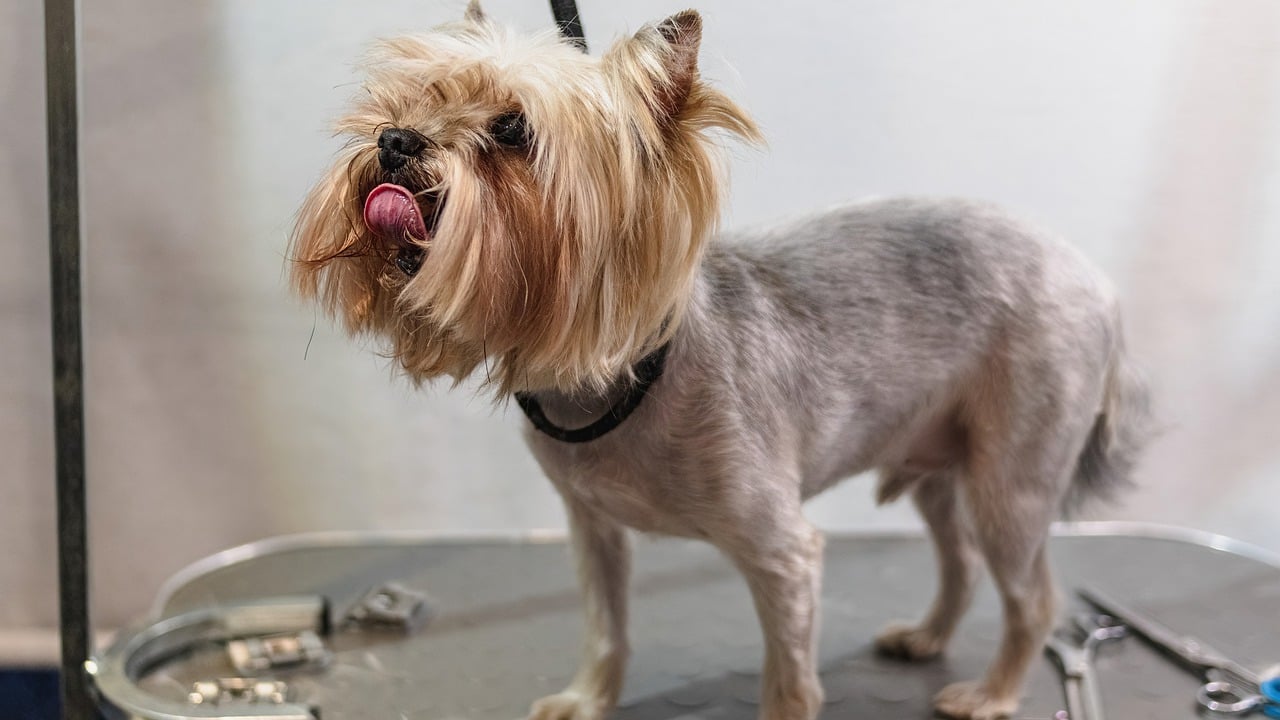
Recognizing When to Seek Help
As much as we love our furry companions, there are times when grooming can become too overwhelming for both pets and their owners. It’s essential to recognize the signs that indicate when it’s time to seek professional help. Just like humans, pets can experience anxiety and stress, and sometimes, they need a little extra support. So, how do you know when it’s time to call in the experts? Let’s explore some critical indicators.
First and foremost, if your pet exhibits extreme fear or aggression during grooming sessions, it may be a sign that they need professional assistance. This could manifest as growling, biting, or trying to escape. These behaviors are not only a signal of anxiety but can also pose risks to both the pet and the owner. If you find yourself in this situation, it's best to consult a professional groomer who is trained to handle anxious animals.
Another sign to look for is persistent skin issues or matting that you can't manage on your own. If your pet has a coat that is severely tangled or matted, it can be painful for them to groom at home. In such cases, a professional groomer has the tools and expertise to safely detangle or shave the coat without causing harm. Additionally, if you notice any unusual skin conditions, such as redness, irritation, or excessive scratching, it’s crucial to consult a veterinarian before proceeding with grooming.
Sometimes, the grooming tools you have at home just aren’t cutting it—literally. If you’re using clippers that are too loud or brushes that seem to irritate your pet’s skin, it might be time to seek help. Professional groomers often have specialized equipment designed for pets with different needs, making the process smoother and more comfortable.
Lastly, if you find that the grooming process is taking a toll on your relationship with your pet, it’s a clear sign that something needs to change. Grooming should be a bonding experience, not a stressful battle. If you’re feeling frustrated or your pet is showing signs of distress, reaching out to a professional can help restore harmony and make grooming a positive experience once again.
In summary, here are some key indicators that it might be time to seek help:
- Extreme fear or aggression during grooming.
- Persistent skin issues or severe matting.
- Inadequate grooming tools leading to discomfort.
- Strain on the pet-owner relationship due to grooming stress.
Recognizing these signs early can save you and your pet a lot of stress and discomfort in the long run. Remember, it’s perfectly okay to ask for help when you need it. After all, a happy pet makes for a happy home!
1. How do I know if my pet is anxious during grooming?
Look for signs such as hiding, excessive barking, growling, or trying to escape. If your pet shows any of these behaviors, it’s a good idea to assess the situation and consider seeking professional help.
2. What should I do if my pet becomes aggressive during grooming?
If your pet becomes aggressive, stop the grooming session immediately. It's best to consult a professional groomer who has experience handling anxious or aggressive pets.
3. Can I groom my pet at home if they have severe matting?
While you can attempt to groom at home, severe matting often requires professional tools and techniques. It’s advisable to take your pet to a groomer to avoid causing pain or injury.
4. How often should I take my pet to a professional groomer?
This depends on the breed and coat type of your pet. Generally, every 4 to 6 weeks is recommended, but consult your vet or groomer for personalized advice.
5. What if my pet has a medical condition affecting grooming?
Always consult your veterinarian before grooming if your pet has a medical condition. They can provide guidance on the safest grooming practices for your pet's specific needs.
Frequently Asked Questions
- What are the signs of anxiety in pets during grooming?
Pets may show signs of anxiety through behaviors such as excessive panting, hiding, whining, or trying to escape. Observing these signs can help you adjust your grooming approach to better suit your furry friend.
- How can I create a calm environment for grooming?
To create a serene grooming space, choose a quiet area away from distractions. Use soft lighting and calming music to help your pet feel more at ease. Having familiar items like their favorite blanket can also provide comfort.
- What grooming tools are best for anxious pets?
For anxious pets, soft brushes and noise-reducing clippers are ideal. Soft brushes prevent discomfort on sensitive skin, while quieter clippers help minimize fear during grooming sessions.
- How often should I groom my pet?
Establishing a regular grooming routine is essential. Depending on your pet's breed and coat type, grooming once every few weeks or even weekly can help them acclimate and reduce stress over time.
- What are some positive reinforcement techniques I can use?
Using treats and praise during grooming can help create a positive association. Offer treats at various stages of the grooming process to encourage good behavior and keep your pet calm.
- Can I incorporate playtime during grooming?
Absolutely! Mixing in short play sessions can make grooming feel less like a chore. Use toys or engage in light play before, during, or after grooming to keep your pet engaged and relaxed.
- When should I seek professional help for grooming?
If your pet shows extreme fear, aggression, or stress during grooming, it may be time to consult a professional groomer or veterinarian. They can provide guidance and support tailored to your pet's needs.







